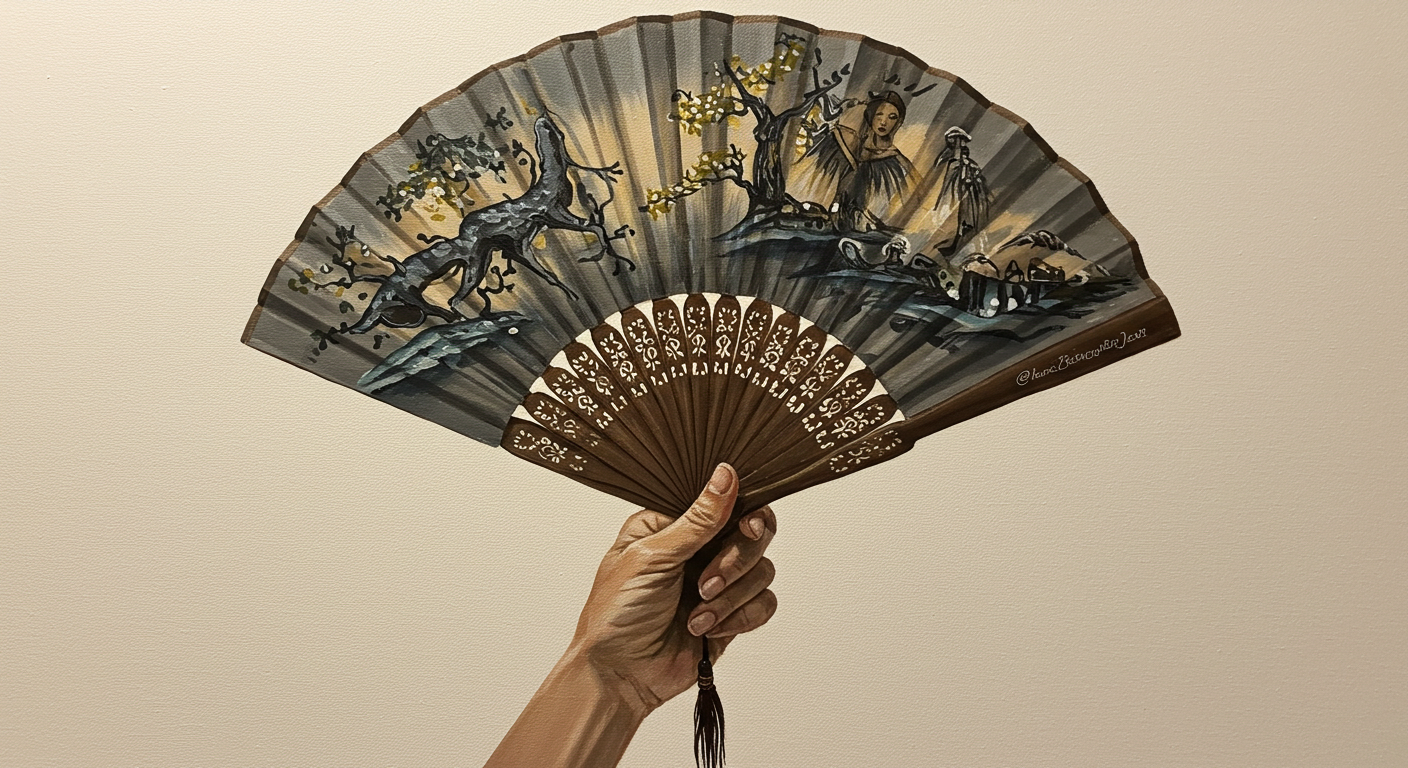Introduction to Vegan Leather
Vegan leather, also referred to as synthetic leather or faux leather, is a material designed to replicate the look and feel of traditional animal leather without involving animal products. This innovative textile has gained significant traction in the fashion industry, particularly among consumers who prioritize ethics and sustainability in their purchasing decisions. Unlike conventional leather, which is derived from animal hides, vegan leather offers a cruelty-free alternative that eliminates the need for animal exploitation, thus appealing to the growing demographic of environmentally conscious individuals.
The rise of vegan leather is often attributed to the increasing awareness of the environmental impacts associated with traditional leather production, which includes high water usage, pollution, and greenhouse gas emissions. As climate change becomes a pressing issue, consumers are actively seeking alternatives that align with their values of reducing harm to the planet. Vegan leather presents an opportunity to embrace stylish and fashionable choices while minimizing ecological footprints.
Furthermore, the appeal of vegan leather extends beyond its ethical considerations. Technological advancements have greatly improved the quality of synthetic materials, making them increasingly indistinguishable from genuine leather. Various production methods and innovations, such as the use of cork, pineapple leaves, and recycled plastics, showcase how vegan leather alternatives can be both sustainable and stylish. This evolving fabric landscape invites brands to explore numerous design possibilities and cater to diverse consumer demands.
In a market that increasingly values transparency and ethical production practices, the significance of vegan leather cannot be overstated. As the fashion industry moves towards more sustainable practices, understanding vegan leather’s role serves as a crucial step in the broader discussion around ethical fashion and consumer responsibility. The exploration of different vegan leather alternatives underscores the potential for a more sustainable future within the fashion realm.
The Environmental Impact of Traditional Leather
Traditional leather production has significant environmental repercussions that merit serious consideration. One of the foremost issues is deforestation. The demand for leather contributes to the clearing of vast areas of forest for both livestock grazing and the cultivation of feed crops. This deforestation not only results in the loss of biodiversity but also disrupts ecosystems that play a critical role in carbon sequestration, thereby exacerbating climate change.
In addition to land degradation, traditional leather tanning processes produce substantial amounts of water pollution. The process frequently utilizes harmful chemicals, such as chromium salts, which can leach into local waterways. These toxic substances pose a severe threat to aquatic life and can contaminate drinking water, affecting both human health and ecological stability. The runoff from tanneries, often improperly treated, leads to further degradation of nearby water sources, resulting in broader environmental and social issues.
Moreover, livestock farming, which is integral to traditional leather production, is a major source of greenhouse gas emissions. Methane emitted by cattle and nitrous oxide from manure management significantly contribute to the global warming potential. According to estimates, the livestock sector generates approximately 14.5% of total greenhouse gas emissions, a statistic that underscores the urgency of transitioning away from conventional leather practices.
The myriad environmental issues associated with traditional leather demonstrate the pressing need for sustainable fashion practices. As consumers become more aware of these impacts, there is a growing impetus to explore vegan leather alternatives that mitigate these adverse effects. By choosing sustainable options, individuals can make a positive contribution to environmental preservation and promote ethical fashion choices.
Exploring Popular Vegan Leather Alternatives
In recent years, the demand for vegan leather alternatives has surged as consumers become more environmentally conscious and ethically minded. Among the most popular alternatives is polyurethane (PU), which is made from fossil fuels and is commonly used in fashion due to its versatility and affordability. PU leather closely mimics the look and feel of traditional leather, making it a favored choice among brands seeking to reduce their environmental impact while maintaining aesthetics.
Another significant alternative is cork leather, derived from the bark of cork oak trees. This sustainable material is harvested without harming the tree, allowing for continuous growth and regeneration. Cork leather is lightweight, water-resistant, and possesses natural insulation properties, making it an appealing option for a range of fashion products, from handbags to footwear. Furthermore, cork is biodegradable, adding to its sustainability credentials.
Mushroom leather, also known as mycelium leather, has garnered considerable attention in the ethical fashion arena. Produced from the root structure of fungi, this innovative material is not only biodegradable but also requires minimal resources for cultivation. The production process yields a soft, durable material that can be dyed and finished similarly to traditional leather, making it an exciting alternative for designers pushing the boundaries of sustainable fashion.
Other noteworthy alternatives include apple leather, made from the by-products of apple juice production, and pineapple leather, known as Piñatex, which utilizes fibers from pineapple leaves. These materials not only utilize agricultural waste but also provide economic opportunities for farmers. Each of these vegan leather alternatives demonstrates a promising direction for the future of ethical fashion, emphasizing the urgent need for sustainable practices within the industry.
Innovative Materials in Development
The fashion industry is experiencing a significant transformation, driven by the growing demand for sustainable and ethical practices. Among the most promising developments are innovative materials that serve as alternatives to traditional animal leather. These emerging materials range from lab-grown leather to an array of plant-based options, each offering unique advantages that could revolutionize the way we approach fashion.
Lab-grown leather, also known as cultured leather, represents a groundbreaking innovation in the materials world. Created through biotechnology, this material is produced using animal cells that are cultivated in a controlled environment. The process eliminates the ethical concerns associated with animal cruelty while providing a high-quality product that emulates the texture and durability of traditional leather. This method not only reduces waste and environmental impact but also holds the potential for scaling production to meet the increasing demand for sustainable fashion items.
In addition to lab-grown leather, a variety of plant-based leathers are gaining traction. These materials utilize renewable resources such as pineapple leaves, apple peels, and even mushroom mycelium. For instance, Pineapple Leather (Piñatex) is derived from the fibers of pineapple leaves, while apple leather is made from the leftovers of apple processing. These eco-friendly materials not only minimize the carbon footprint involved in manufacturing but also promote agricultural waste utilization.
The science behind these innovative alternatives is still evolving, with researchers continually exploring new formulations and production processes to enhance the aesthetic appeal and durability of plant-based and lab-grown leathers. As technology advances, the potential of these materials grows, paving the way for a more sustainable fashion industry that prioritizes ethical considerations without sacrificing quality.
Comparing Durability and Quality
The discussion of vegan leather alternatives often raises important questions regarding their durability and quality in comparison to traditional leather. Traditionally, leather has been lauded for its longevity and resilience. However, recent advancements in manufacturing processes for vegan leathers, made from materials such as polyurethane, pineapple leaves, and other plant-based substances, are increasingly challenging this notion. These innovations provide consumers with options that are not only more ethical but also remarkably durable.
Durability is a crucial factor when evaluating any material, including vegan leather alternatives. Many contemporary vegan leather products are designed to mimic the durability of conventional leather. For example, high-quality synthetic options can withstand abrasions, tearing, and environmental conditions with relative ease. Some products are treated to enhance resistance to moisture and stains, making them suitable for various applications, from fashion to furniture upholstery. In real-world scenarios, many users report excellent performance over time, dispelling the myth that vegan materials wear out quickly.
Maintenance is another aspect that plays a significant role in consumer perceptions. Conventional leather typically requires regular conditioning and careful cleaning to maintain its appearance and structure. In contrast, vegan leather alternatives are often easier to care for, requiring simple wipes with a damp cloth for cleaning. This ease of maintenance appeals to a broader audience who prioritize convenience without sacrificing aesthetics.
Despite these advancements, some skepticism regarding vegan leather’s quality remains among consumers. This perception may stem from early versions of synthetic materials, which did not hold up as well. However, as technology continues to evolve, many modern variations of vegan leather demonstrate excellent quality, comparable to traditional leather. Therefore, it is crucial for consumers to remain informed about the various options available to them in the market.
Fashion Brands Leading the Way
As the demand for sustainable and ethical fashion continues to rise, several brands are making significant strides in utilizing vegan leather alternatives. These brands are not only transforming their product lines but are also setting a benchmark in the fashion industry for environmental responsibility. This section highlights notable companies that are at the forefront of this movement.
One prominent example is Stella McCartney, a designer renowned for her commitment to cruelty-free fashion. McCartney’s brand has long embraced innovative materials, including the use of regenerative natural fibers and various vegan leathers derived from synthetic materials. The brand’s pioneering approach has influenced other designers and established a new standard for luxury fashion.
Another brand making waves in the realm of vegan alternatives is Veja, a French footwear label that prioritizes sustainability in every aspect of its production. Veja utilizes materials like recycled plastic bottles and organic cotton, alongside its distinctive use of vegan leather derived from corn waste. This commitment not only reduces environmental impact but also promotes fair trade practices in their supply chain.
Additionally, brands like Matt & Nat have built their entire identity around the principles of sustainability and ethical production. The Canadian brand focuses on creating stylish bags and accessories using vegan leather sourced from recycled materials. Their mission emphasizes environmental consciousness and social responsibility, encouraging consumers to choose sustainable fashion options.
Furthermore, more established labels, such as Adidas, are also incorporating vegan leather alternatives into their products. Their collaboration with organizations dedicated to sustainability has led to the development of lines that prominently feature eco-friendly materials. By blending performance and ethics, Adidas challenges the traditional perceptions of both sportswear and luxury fashion.
These examples illustrate the growing commitment of fashion brands to not only acknowledge but also promote the benefits of vegan leather alternatives, inspiring a shift towards a more ethical fashion industry.
Consumer Attitudes Towards Vegan Leather
The landscape surrounding consumer attitudes towards vegan leather has significantly evolved in recent years. As ethical and sustainability concerns have risen to the forefront of public awareness, a larger segment of the consumer population is recognizing the impact of their purchasing decisions. Various surveys and studies indicate a marked increase in demand for vegan leather, driven by values such as environmental responsibility, animal welfare, and social consciousness.
A notable shift is observed in younger demographics, particularly millennials and Gen Z consumers, who place a high premium on sustainable products. Research suggests that approximately 70% of these consumers express a high level of interest in purchasing vegan leather alternatives over traditional leather. This preference is not merely a matter of trend but rather reflects a deeper commitment to eco-friendly practices. Factors influencing this trend include growing awareness of the negative environmental impact of animal agriculture, along with a desire to support cruelty-free products that align with their ethical beliefs.
Moreover, market research illustrates an expanding range of brands incorporating vegan leather into their product lines, catering to the new consumer ethos. These actions signal a significant shift within the fashion industry towards ethical consumption. As the trend continues to gain momentum, it appears that the consumer movement towards vegan leather will only strengthen, presenting opportunities for brands to engage with conscientious shoppers effectively.
Challenges in the Vegan Leather Market
The vegan leather market is encountering several challenges that impact its production and widespread adoption. One significant hurdle is scalability; while there is a growing demand for ethical fashion products, many vegan leather alternatives are still in their infancy. The manufacturing processes for these materials often rely on small-scale production, which can limit availability and hinder the ability to meet rising consumer demands effectively. This challenge becomes even more pronounced as brands seek to incorporate vegan leather into larger product lines while maintaining quality and sustainability.
Quality control also presents a noteworthy barrier. Various vegan leather alternatives, such as those made from polyurethane, pineapple leaves, or mushrooms, can differ significantly in durability, feel, and overall performance. As brands navigate the plethora of options, ensuring consistent quality across different collections can be difficult. Inconsistent product performance may deter consumers who expect high standards synonymous with traditional leather goods. Therefore, the industry needs to establish rigorous quality benchmarks to maintain trust and consumer satisfaction.
Market education is another challenge that must be addressed as the vegan leather sector continues to grow. Many consumers are still unfamiliar with the concepts of sustainable fashion and ethical alternatives. Therefore, companies must engage in informative marketing strategies to educate potential customers on the benefits of choosing vegan leather over traditional leather products. Transparency about sourcing and production processes can help demystify these alternatives while highlighting their ecological benefits.
Furthermore, price sensitivity plays a critical role in adoption rates. While vegan leather is often considered a more ethical choice, it can also be more expensive than conventional leather options. This price discrepancy can alienate budget-conscious consumers who may perceive the ethical option as financially inaccessible. Addressing this aspect will require strategic pricing models and potential subsidies to foster broader acceptance.
The Future of Fashion: Trends and Predictions
The fashion industry is undergoing a significant transformation, driven by an increasing awareness of sustainability and the ethical implications of traditional leather production. As consumers become more conscientious about their purchasing decisions, the demand for vegan leather alternatives is expected to rise sharply. This shift towards cruelty-free materials not only reflects a preference for ethical consumption but also highlights a growing desire for environmentally friendly products. Innovations in biodegradable, plant-based, and recycled materials are anticipated to shape the future of fashion.
Emerging technologies, such as 3D printing and biofabrication, play a crucial role in the development of vegan leather alternatives. These advancements allow brands to create high-quality materials that mimic the look and feel of traditional leather without the negative environmental impact. For example, mycelium leather, made from mushroom roots, and lab-grown leather present promising options that are both sustainable and stylish. As these technologies mature, they are likely to become more accessible and affordable, encouraging wider adoption across the fashion industry.
Furthermore, consumer behavior is poised for evolution. Shoppers are increasingly seeking transparency regarding the sourcing and production processes of the products they buy. This interest in ethical fashion is expected to compel brands to adopt better practices and communicate their sustainability efforts effectively. Social media will continue to serve as a powerful platform for consumers to share their values and promote brands that align with ethical standards, further influencing market trends.
In summary, the future of fashion will likely be characterized by a growing reliance on vegan leather alternatives, driven by a combination of technological advancements and changing consumer preferences. As the industry embraces sustainability, it will pave the way for innovative materials and ethical practices that redefine the very essence of fashion itself.



